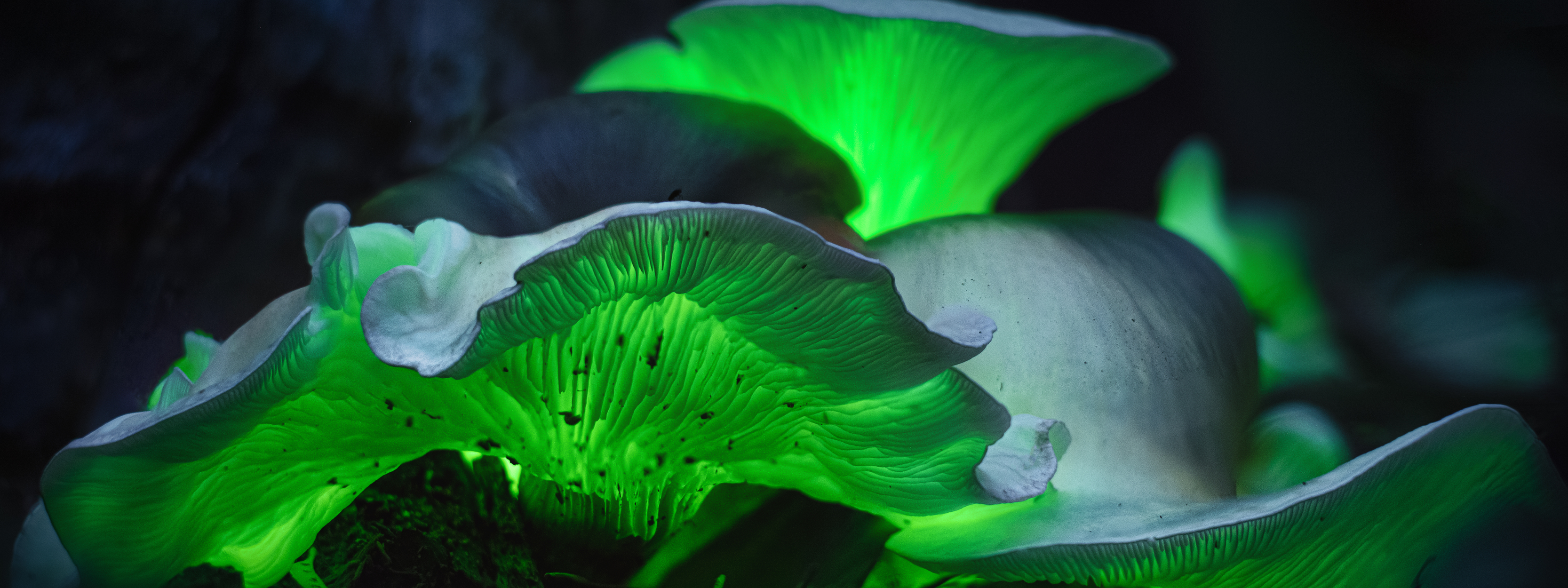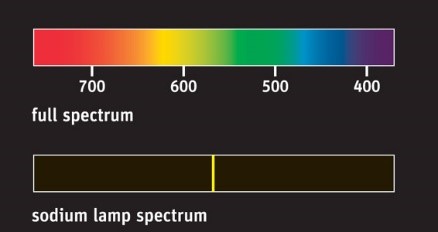
- This event has passed.
First Friday: Glow in the Dark


Buy Tickets
Friday, February 3
6-10 p.m.
$15 adults, $10 kids/seniors and $5 members
Why do some living creatures glow? We’ll explore how organisms in the sea, land and the air use bioluminescence to adapt in nature. Are there examples of glowing on other planets? We’ll ask the scientists who are searching for the answers in this fun-filled evening with glow-in-the-dark hands-on activities and demonstrations. See and learn about real glowing organisms, experience illuminated installations and explore immersive experiences about the bioluminescent phenomenon.
What is Glowing in My Cave? With NASA’s Dr. Penelope Boston
Caves are dark until we light them up with our headlamps and flashlights. But even in such a naturally dark environment, minerals can glow with brilliant colors, microbial colonies growing on rocks can sometimes only be found using ultraviolet light. Even some mushrooms light up all by themselves! Come into this dark realm to see the beautiful gems of light to be found in caves.
Telescope Viewing: Clouded Out
Unfortunately, the weather is not looking promising for telescope viewings this weekend. To protect our historic telescopes, we are not able to open our domes on nights with high humidity, clouds or rain.
To see Comet C/2022 E3 (ZTF), we recommend using binoculars in areas with dark, clear skies. Learn more about how to spot the Comet in our latest blog post.
Light Lab
With members of Chabot’s Education team
6:30 pm, Theater
Light is all around us, even when it is unseen! In this lab, the nature of light is uncovered to further understanding of what light is, where it comes from, and how the electromagnetic spectrum can reveal the invisible universe through a series of illuminating demonstrations.
Star Life Cycle with the Galaxy Explores Astronomy Team
With Galaxy Explorer Hanna Johnson
6:45 p.m., Studio 3
Like humans, stars develop and have a life cycle: the only difference is that it takes stars millions and billions of years to complete it. Stellar evolution follows the change of stars over time and ends with either the ultimate demise of the star, or complete transformation of it. Join us as one of our Galaxy Explorers shares the secret life of stars!
The Tea with GE’s: Newscast & Live Show
With members of Chabot’s Galaxy Explorers Media Team
7 p.m., Classroom 2
GE MEDIA TEAM PRESENTS: The Galaxy Explorer Report, the top source for our Milky Way’s celestial updates. This week’s show features the James Webb Space Telescope’s first year in space, an exciting fire science demonstration, and an exclusive GE alumni interview panel. Don’t miss this riveting experience, curated by Chabot’s very own high school volunteers!
Glow by Night: Bioluminescent and UV Fluorescent Organisms of California with Damon Tighe
7:30 p.m., Theater
You don’t have to travel to the tropics to see organisms that glow at night! California has organisms that are bioluminescent and produce their own light to attract mates, get rid of predators, or to help them find a new place to live. There are also plenty of organisms in California that are UV fluorescent under a black light, the biological function is a bit nebulous, but their glowing beauty is not. This talk will give a wide survey of these glowing organisms, where to find them, how to see them, and how to document them.
Damon Tighe grew up in Calaveras County, California and made his way to the Bay Area to attend Saint Mary’s College in Moraga to student Biology and Chemistry. After stints as a teacher in Portland, Oregon, a filmmaker in Bozeman, Montana, he returned to the Bay Area to work on the Human Genome Project at the Joint Genome Institute and now works for Bio-Rad Laboratories helping teachers bring biotechnology and modern biology education into classrooms.
Live Zeiss Astronomy presentation
With members of the East Bay Astronomical Society
7:30 p.m., Planetarium
Explore the cosmos as a Chabot Astronomer leads you through the galaxy using a Zeiss Universarium Mark VIII Star Projector.
Space In Your Face! Presents “Stars are lit “
With Julia DeMarines
Studio 3, 8 p.m.
Stars are so hot right now. In this presentation we will learn about the different kinds of marvelous stars that exist in our Universe, how they are born, and how they die. Stick around to make your own glow-in-the-dark constellations!
Julia DeMarines is Space in Your Face and a PhD student, Astrobiologist, science communicator working with the UC Berkeley SETI Research Center & Blue Marble Space.
Activities and Demonstrations
Light Up Accessories
With Amped Atelier
6 p.m. – 8 p.m., Mezzanine
Light up the night! Learn how to make a LED circuit and get creative with these fun make-and-take wearable pins and bracelets.
Small parts are used in this activity, children should be supervised.
Glow in the Dark Spin Art
With Galaxy Explorers
6 p.m. – 9 p.m., Lab 1
Plants and animals in the ocean, on the land and in the sky use bioluminescence and biofluorescence in many ways to help them survive. Create your own florescent art using paint and a spinner. Each piece will be unique—just like the numerous plants, animals and fungi that glow in the dark!
Make Your Own Color-Changing Bracelets
With Galaxy Explorers
6 p.m. – 9 p.m., Studio 1
There are many ways that animals, plants and even rocks can glow different colors. Some items change color when exposed to sunlight. This is your chance to make your own glowing bracelet with pony beads that change in the sunlight!
Uncovering Color
With Galaxy Explorers
6 p.m. – 9 p.m., Studio 2
Enter a room where a special light bulb removes colors from images and your surroundings.

What’s going on?
This light source, called a Low-Pressure Sodium vapor lamp emits visible electromagnetic radiation in a very narrow band of the spectrum, about 589nm (1 nanometer is equal to one billionth of a meter).
The visible electromagnetic radiation spectrum comprising colors ranges from about 400nm to about 700nm, from the shorter red wavelengths to the longer Violet wavelengths.
This limited access to reflected color causes your eyes to perceive things more in a shaded greyscale, or like seeing in black and white, with the effect gradually increasing as your eyes adjust.
Shine a white light onto these images to reveal their true, more colorful appearance.
Sodium vapor lamps are commonly used for streetlights because they are energy efficient and reduce light pollution for astronomical observations.
Spectra Cart
With Galaxy Explorers
6 p.m. – 9 p.m., Studio 2
What are rainbows? How do astronomers identify distant gases in stars, nebulae, and exoplanet atmospheres? The answer to both these questions is spectra! Look at different light sources with a special tool to split their light into different colors. You may find that not all rainbows are the same.
Telescope Makers Workshop
With East Bay Astronomical Society
7:30 p.m. – 10 p.m., Lab 2
Open to all ages, the Telescope Makers’ Workshop is an all-volunteer group committed to helping people build their own telescopes. Drop in to see what they are up to.
The Eastbay Astronomical Society serves Bay Area residents and astronomy enthusiasts with events, classes, and Oakland’s premier views of the Universe.
Glowing California
East Bay Regional Parks District
6 p.m. – 9 p.m., Studio 3
Did you know that in California you can find glowing millipedes, mushrooms and even ocean waves!? Join a Naturalist from the East Bay Regional Parks District to discover why so many plants, animals, and fungi glow in the dark.




